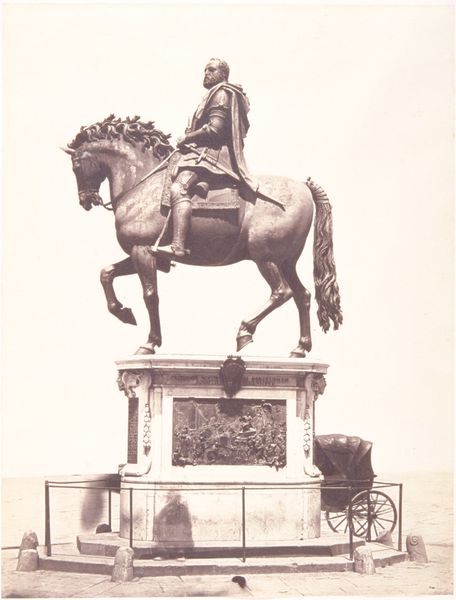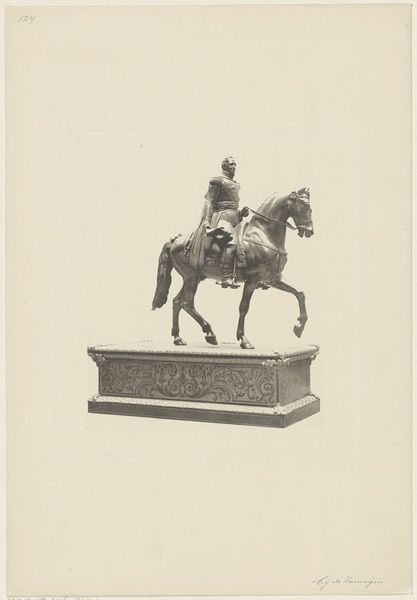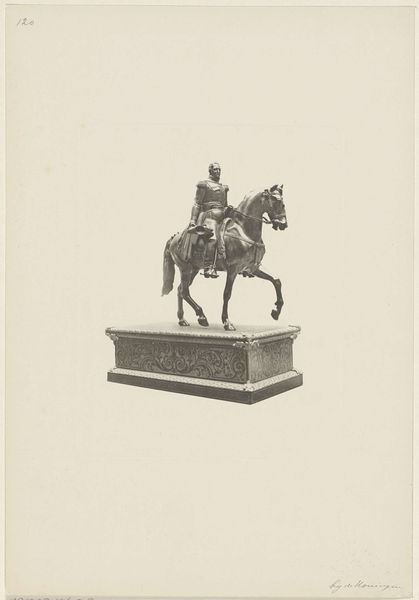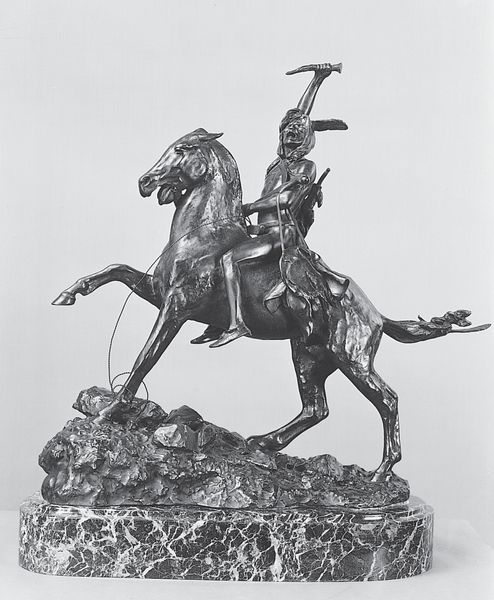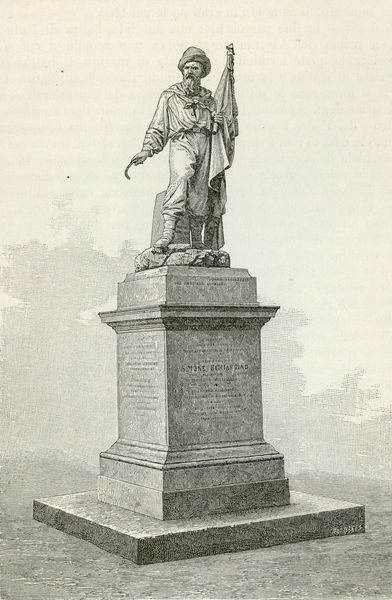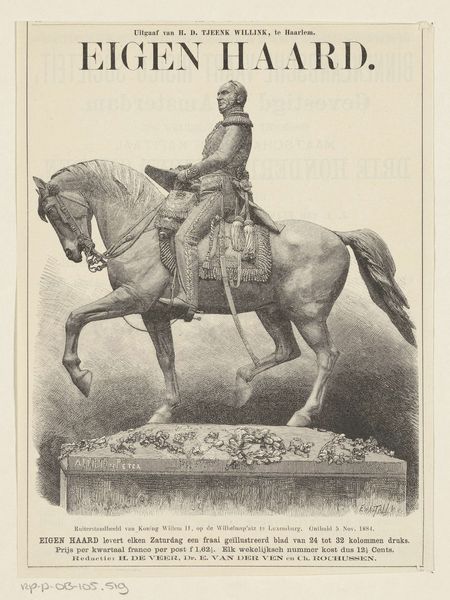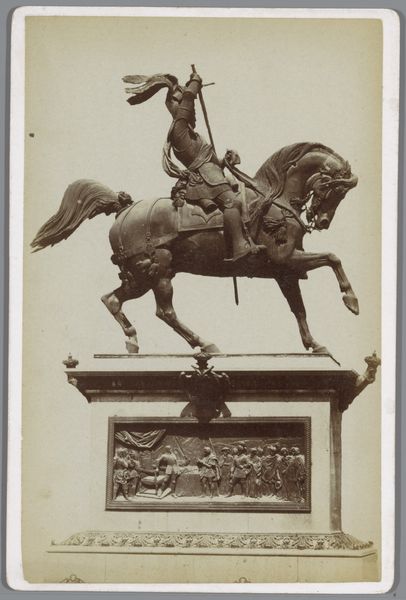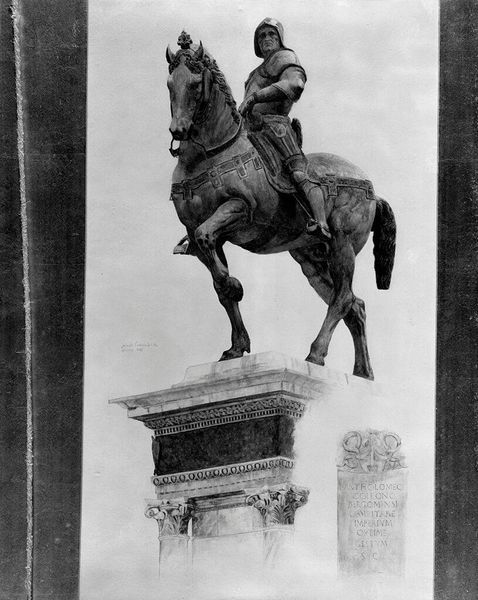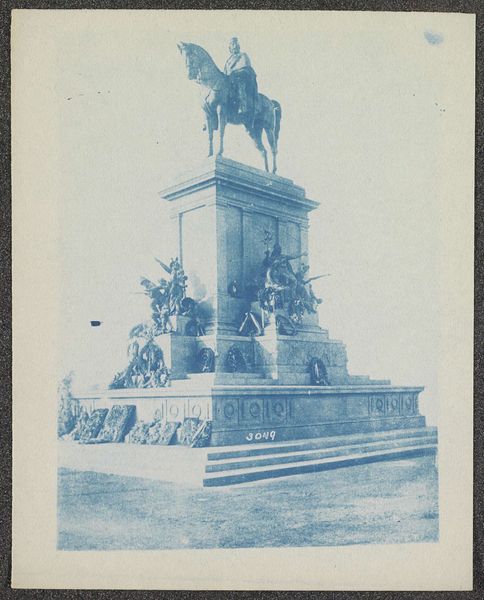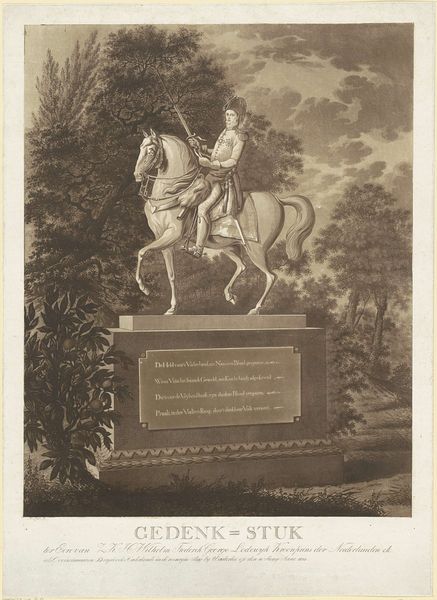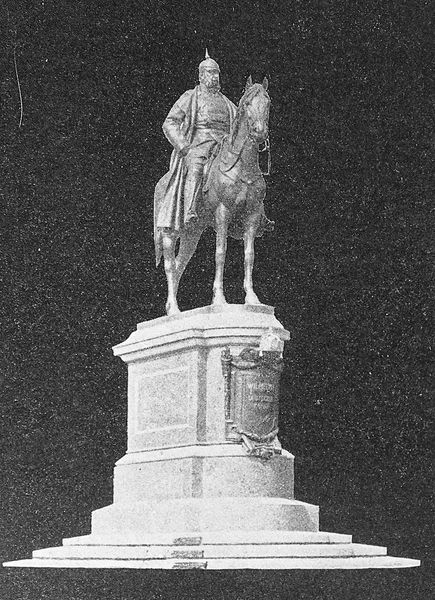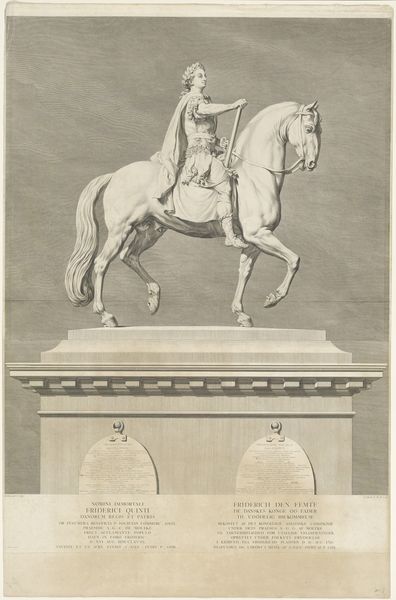
Copyright: Public domain
Giuseppe Barberis made this engraving, Monumento a Vittorio Emanuele II Sulla Piazza Omonima, sometime between about 1870 and 1910. It presents the monument to Victor Emmanuel II, first king of a unified Italy. The image invokes a powerful set of ideas about nationhood and the role of the monarchy, as well as the concept of progress, both military and social. Let’s consider the iconography: the equestrian statue with the rider brandishing a sword. This is a visual trope with a long history and cultural resonance in Europe, linking back to the victory monuments of ancient Rome, and it reflects the social and political context of a newly unified Italy. Understanding Barberis’s image requires a wide knowledge of Italian history, politics, and art institutions. The historian's role is to interpret that meaning within its specific historical context. We might consult a range of documentary sources, from newspapers to official records, to more fully understand the monument and its place in Italian society at the turn of the century.
Comments
No comments
Be the first to comment and join the conversation on the ultimate creative platform.
